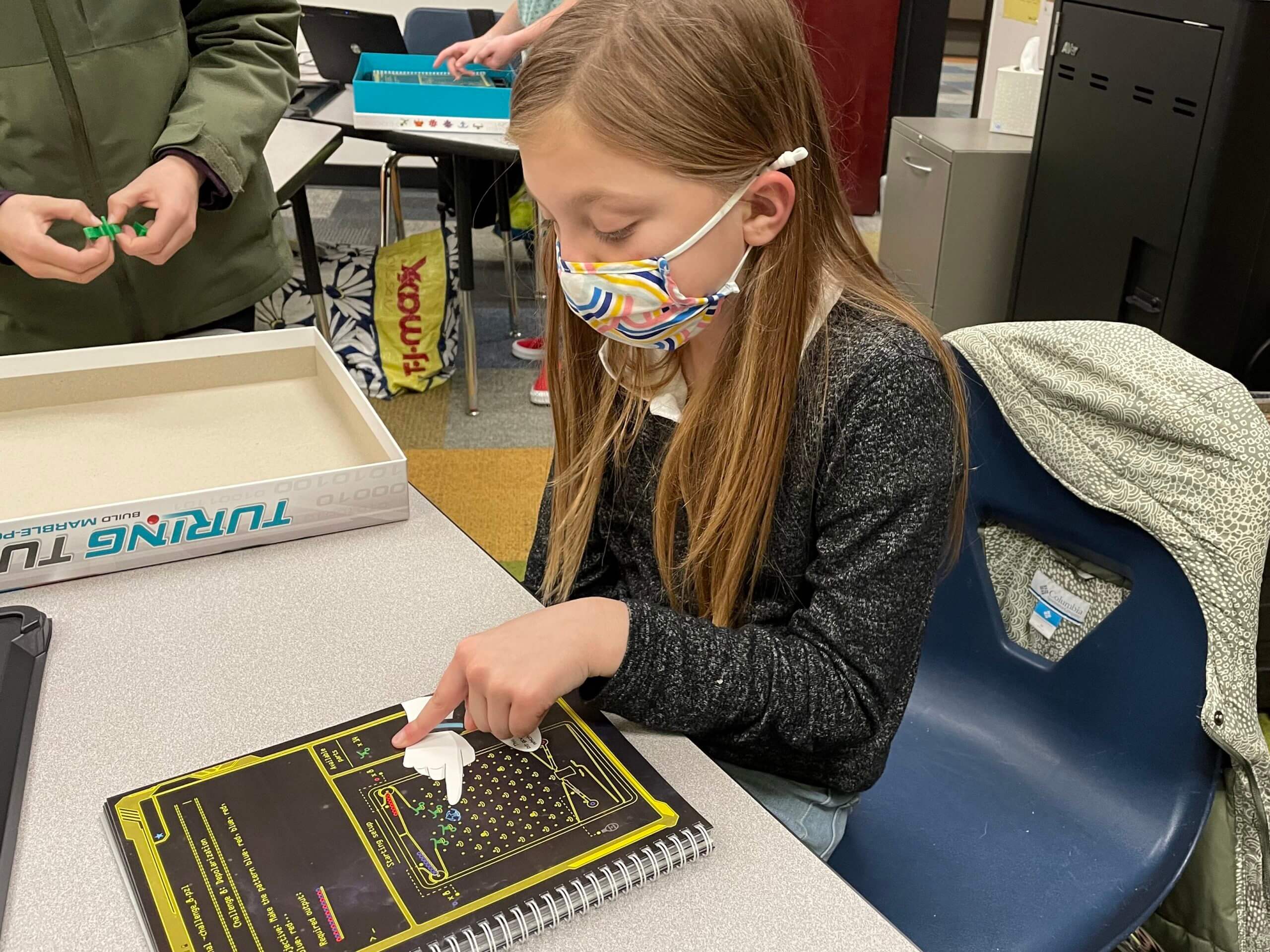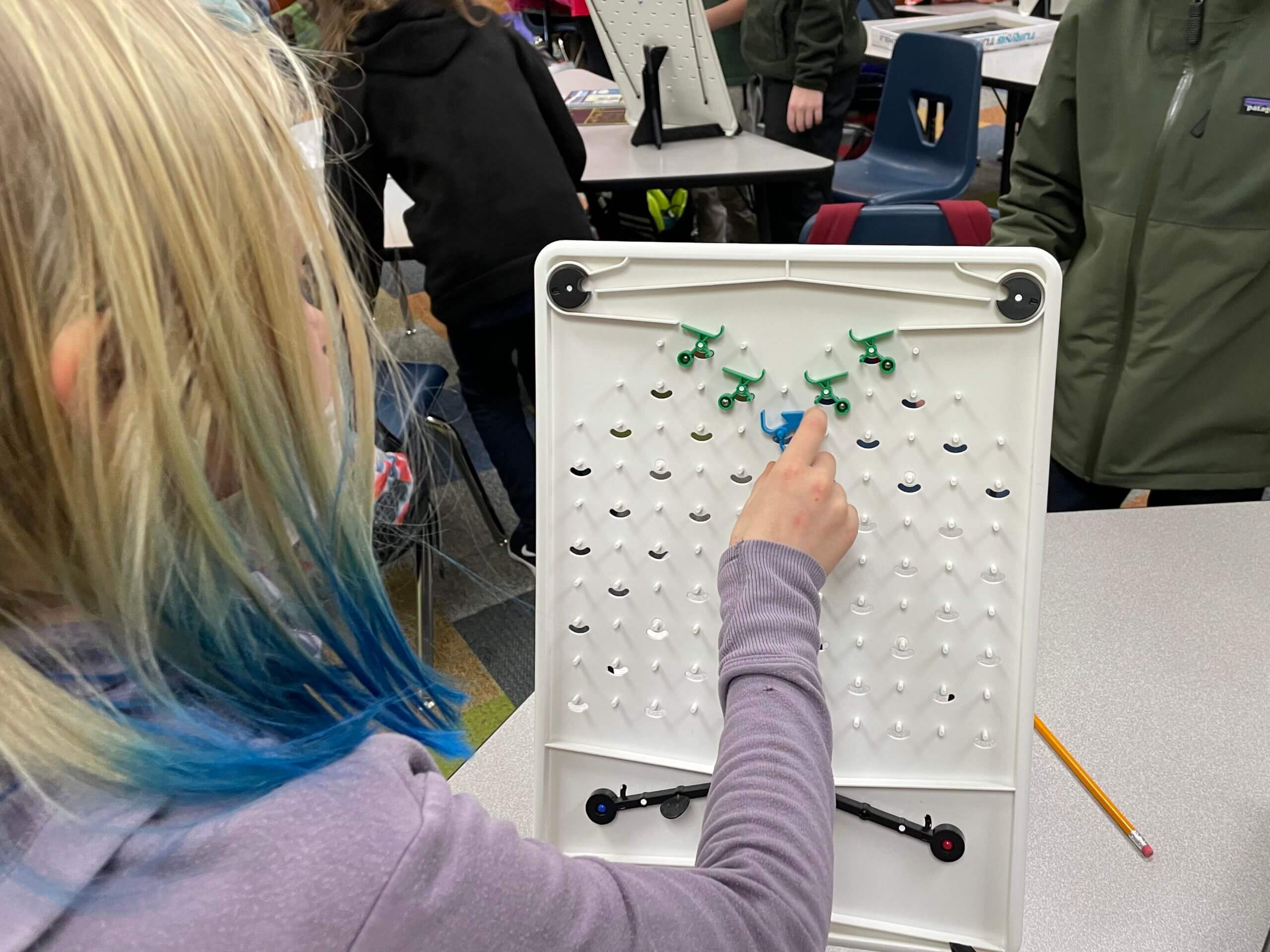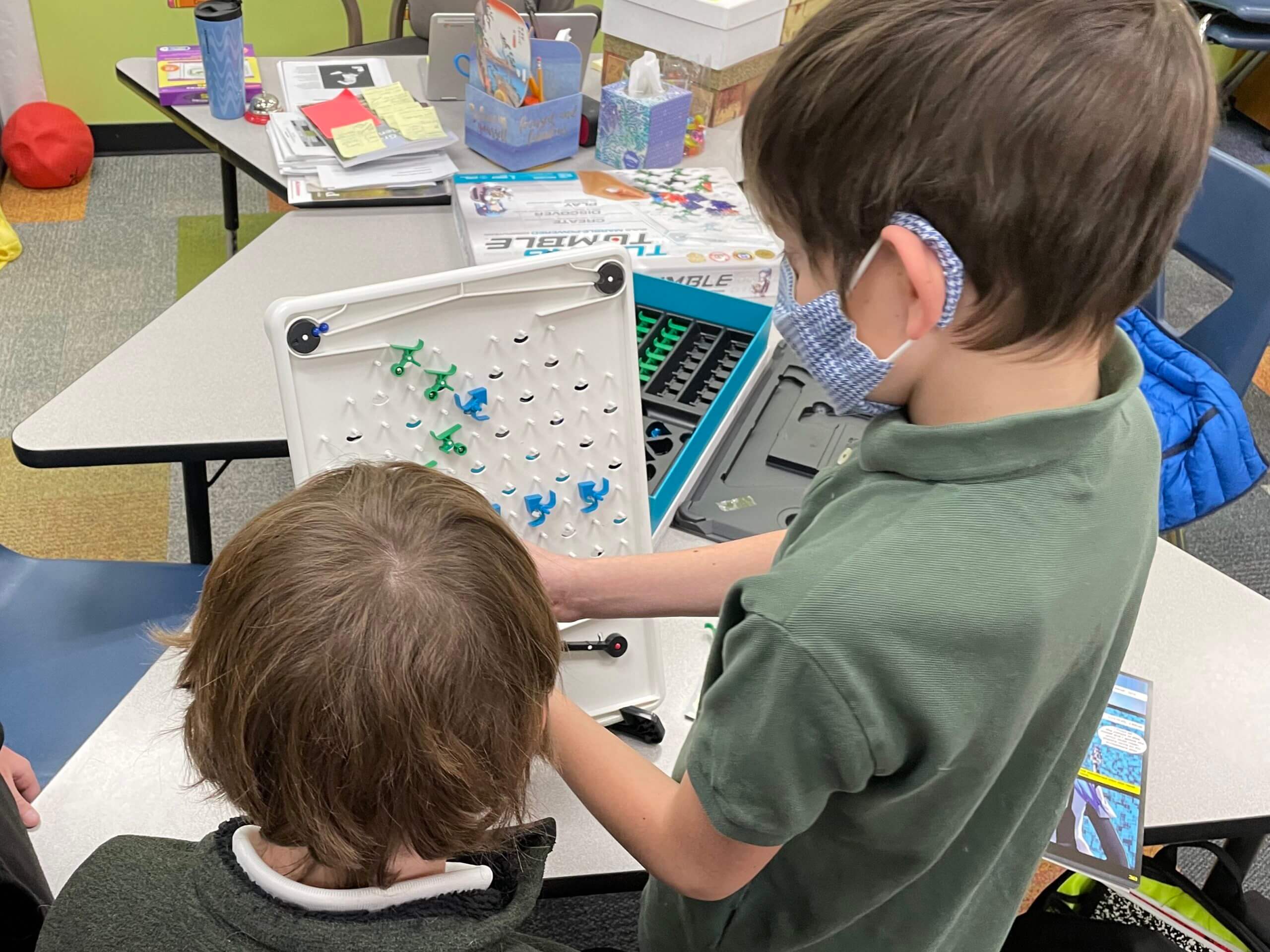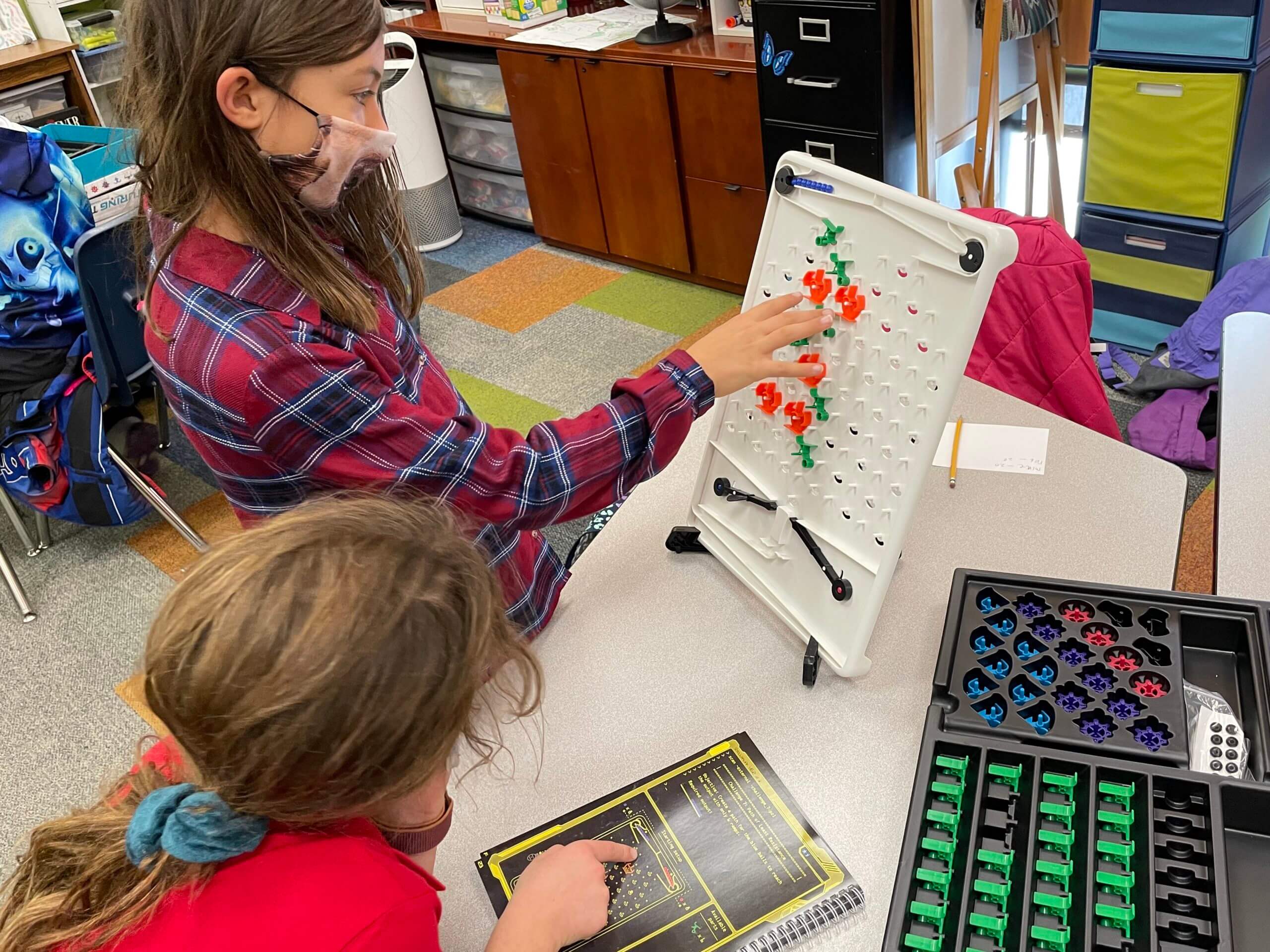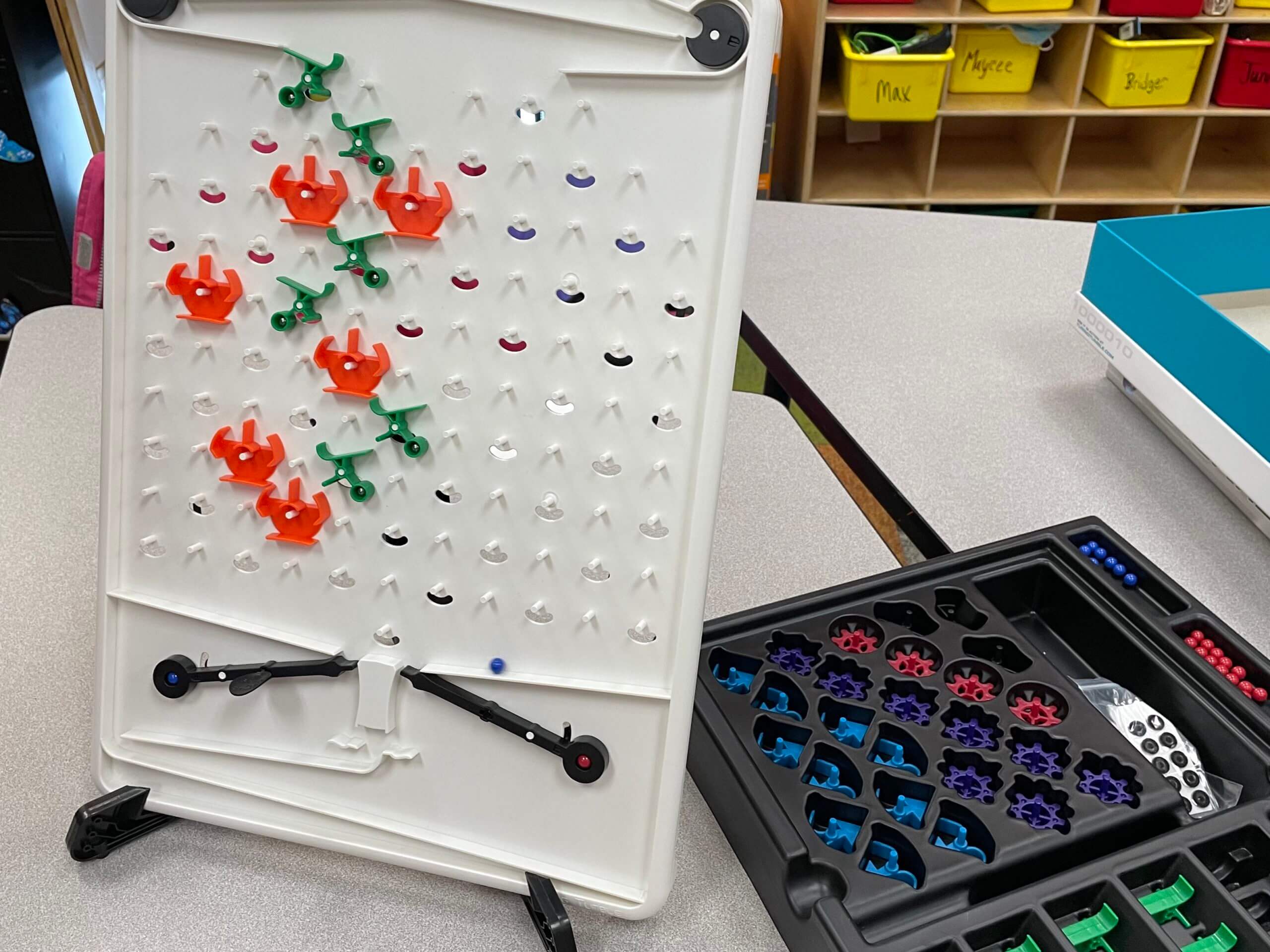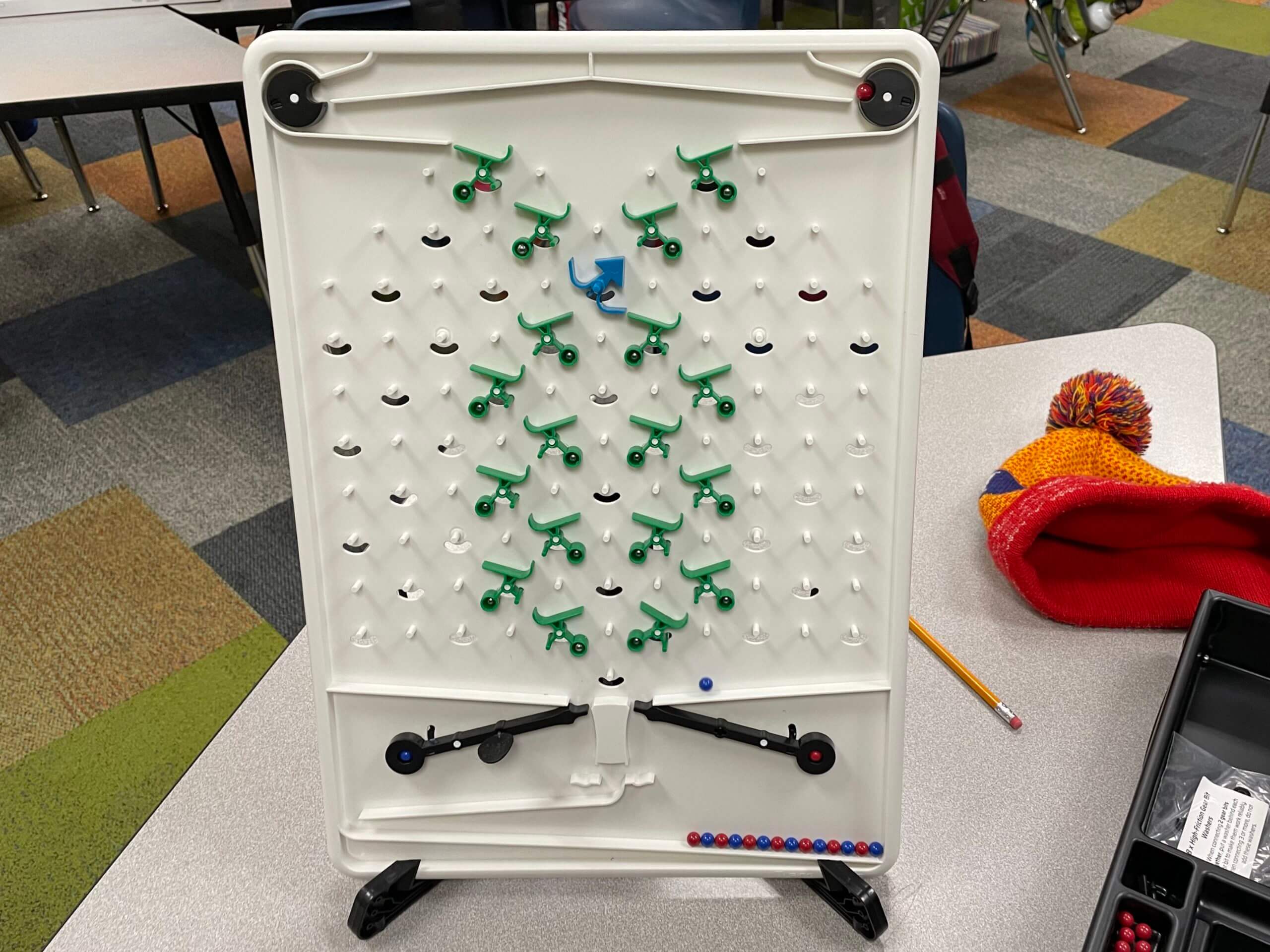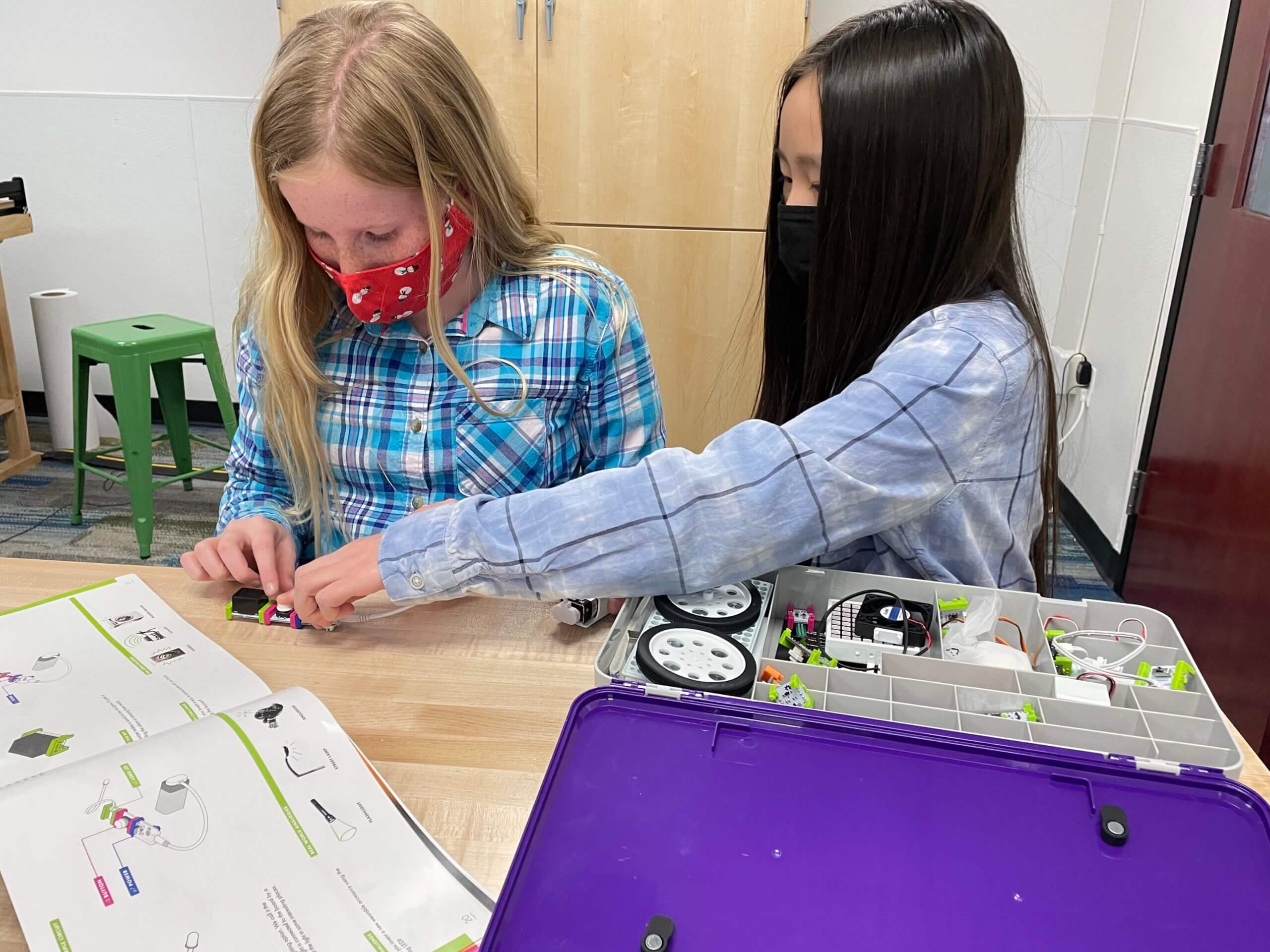This fall, Lower School students had an amazing experience sharing adventures with a wild robot…
Fourth grade students are learning about the inner workings of computing in a fun way. By using “The Turing Tumble,” an educational puzzle game, students are building mechanical computers powered by marbles. They have 51 logic puzzles to choose from, each puzzle presenting a problem to solve. These puzzles are woven into a narrative presented in comic book form, and as each puzzle is solved, students grow closer to their ultimate goal of rescuing a space engineer stranded on a forgotten planet.
Students break into groups of 3-4, and each team member rotates between various vital roles in building the computer and solving the puzzles. They are learning computing principles — coding strategies, binary operations, and logic gates — all without electronics. As one student explains, “You’re making a computer, but you’re not on the computer.” Students attending school online are able to access a simulator, which allows them to build machines digitally and animate the marbles. This hands-on experience allows all the students to discover, by seeing and feeling, how computers really work. They all agree that “it’s really fun, it’s educational, and it’s kind of hard.” This is because, while the game is engaging and fun, it compels students to stick with a problem until it’s solved, all the while building logic and critical thinking skills and boosting their understanding of coding concepts. The Tumbler was named for Alan Turing, considered the father of theoretical computer science and artificial intelligence.
